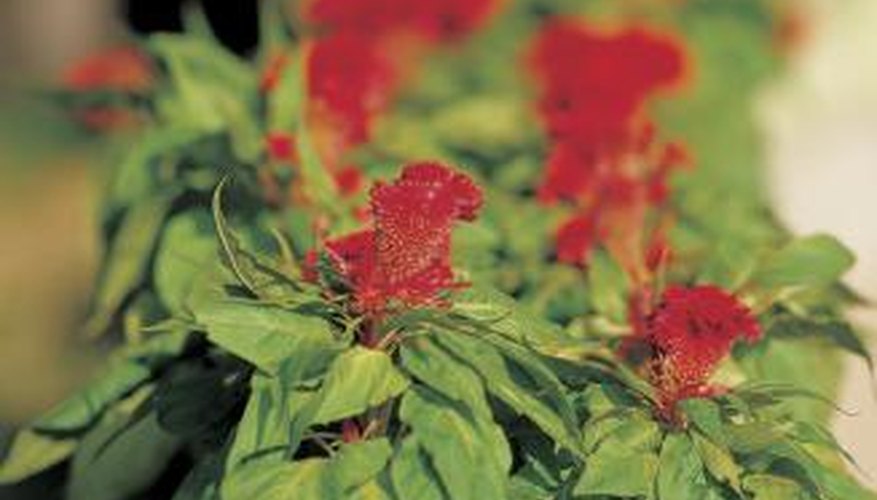The name snapdragon actually refers to a genus of plants called Antirrhinum that contains several distinct species. These plants have coloured blooms that resemble a gaping dragon's mouth. Although these plants are hearty shrubs that can stand up to cold weather, they are susceptible for wilting. One of several agents causes snapdragons to wilt, and often you can minimise or reverse the wilting if you catch it early.
Water
Although snapdragons are durable species that can take a beating, like all plants, snapdragons require water to survive. Extended periods of drought can cause parts of the plant to die and cause otherwise brilliant blooms to fade and eventually wilt. Lack of water can also occur in areas where the soil is too densely packed to allow for the passage of water. Remedy a dehydrated snapdragon by aerating the soil with an aerator, or by perforating the soil with a pencil to about 2 to 3 inches under the surface. This action will help loosen tightly packed soil and allow the root system access to fresh water.
- Although snapdragons are durable species that can take a beating, like all plants, snapdragons require water to survive.
- This action will help loosen tightly packed soil and allow the root system access to fresh water.
Fertiliser
The primary reason for wilting in flowering plants such as snapdragons is malnutrition. Soil is the source of most of a plant's nutrients including nitrogen, phosphorus, calcium, magnesium, potassium and a host of other elements and minerals. Unfortunately, hungry plants sometimes exhaust the supply of these nutrients in the soil surrounding them. If the snapdragon begins to wilt, try an infusion of nutrients from a liquid fertiliser. Liquid fertilisers are more easily assimilated by plants since nutrients are already in liquid form and do not require slow processes such as water erosion to be absorbed by the snapdragon.
- The primary reason for wilting in flowering plants such as snapdragons is malnutrition.
- Liquid fertilisers are more easily assimilated by plants since nutrients are already in liquid form and do not require slow processes such as water erosion to be absorbed by the snapdragon.
Sunlight
The catalyst of photosynthesis is sunlight. This integral part of daily life for the snapdragon triggers photosynthesis as well as transpiration, the process of water exchange that a plant uses for pulling hydration and nutrition from the earth. Snapdragons tolerate and can even benefit from partial shade, but require at least four to six hours per day to remain healthy. If a snapdragon sits in the shade too long, it will wilt and eventually die. Unfortunately, transplanting the snapdragon to a sunnier area may be the only solution to this particular problem.
- The catalyst of photosynthesis is sunlight.
- This integral part of daily life for the snapdragon triggers photosynthesis as well as transpiration, the process of water exchange that a plant uses for pulling hydration and nutrition from the earth.
Pests
Fungus such as Pythium or powdery mildew as well as tomato spotted wilt virus are common pests for the snapdragon. These illnesses leech the snapdragon's resources and nutrition at the same time, causing its leaves to wilt from a combination of malnutrition and exhaustion. If mildew or fungus should appear, dry them out by watering only the soil beneath the plant and leaving the foliage dry. Prune already dead areas from the snapdragon to help keep it strong and administer a liquid fertiliser to help boost nutrient levels.
- Fungus such as Pythium or powdery mildew as well as tomato spotted wilt virus are common pests for the snapdragon.
- Prune already dead areas from the snapdragon to help keep it strong and administer a liquid fertiliser to help boost nutrient levels.
